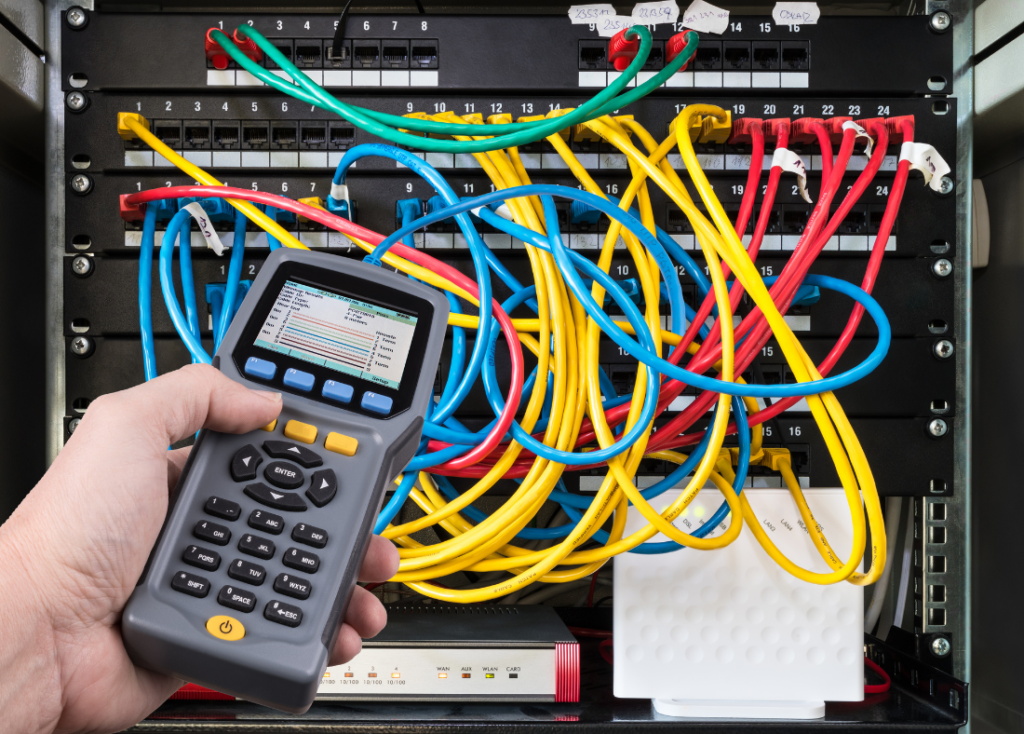It is no secret that our world is hyper-connected. Even the simplest of activities we enjoy or business tasks we carry out require some type of electronic connection. There are so many different types of connections that allow for modern-day “ease of use” for effective communication. In this blog, we’re going to break down the imperative of structured cabling.

The most easily recognizable form of structured cabling today is fibre optic cabling. This form of cabling is required in most large-scale telecommunications.
We’re here to break down the importance of structured cabling, some different types of cabling in use today, as well as the various benefits of such a system.. Here we go!
The Importance of Structured Cabling
A thoughtfully implemented cabling arrangement forms the life-blood of your networking and communications service.
To ensure the effectiveness of a structured cabling system requires an advanced understanding of the needs of that location, or collection of locations. Afterall, this system supports performance and allows for future growth. A competent cabling service-provider evaluates your business’ needs and designs the system accordingly. This ensures that you can both communicate effectively, but also keep future growth top-of-mind. This makes it a scalable solution!
Without such a system, your potential for communication growth is severely limited. This can be costly in the long term, and a major inconvenience in the short term.
Types of Cabling
There are three main types of cabling we will discuss in this blog: fibre optic, ethernet, and radio frequency. Structured cabling systems first require the right cabling to be selected according to current and future needs.
Fibre-Optic
Fibre-optic cables contain an assembly similar to a electric cable, but also contain one or more optical fibres that allow light to be transferred. Fibre-optic systems are very common in the telecommunications industry, where they supply different services to millions. Fibre-optic networks can also be used on a smaller scale such as between buildings to centralize communications effectively. Fibre-optic cables are very strong and adaptable, which is a key reason why they’re so widely used by technology conglomerates. These companies need a reliable way to serve their customers and fibre-optic meets that need.
Ethernet
Ethernet cabling systems are generally used for smaller-scale applications. These cables use copper to deliver data, though they are notably slower than fibre-optic. These cabling arrangements are defined by a set of “rules” or a common network language, in order to transfer data. Ethernet systems are used more in traditional information environments but still hold weight in the market depending on user requirements. It’s important to understand that while ethernet is certainly faster than most wireless communication methods, they aren’t as fast or as reliable as fibre-optic cables. But, they still have a unique place in the market!

Radio Frequency
To enable radio frequency networks, structured cabling is a preliminary requirement. These cables are the basis for setting up an environment that supports the free transfer of radio frequencies. There are many different types of cabling included in this category, based on client needs. For example, cabling for long-range walkie talkie communication may need different wiring than a CCTV installation. Different needs require different structured cabling solutions.
For a breakdown of the different cabling we use in these categories, click here.
Benefits of Structured Cabling

Simplicity
Structured cabling allows for simplicity on many fronts. When you need to add bandwidth, it is simpler to add on to a structured system. If you renovate a location, the systems themselves are easier to manipulate and restructure accordingly. A carefully planned system eliminates the need for separate cabling systems in different places. It is more efficient, through and through.
Cost-Effective
As mentioned above, because these systems are scalable, they’re also more cost-effective long term. With a centralized cabling system, there is less potential for service interruptions and downtime. There is also a marked reduction in power and maintenance costs.
Higher Performance
With the planning done ahead and according to forecasted needs, you’re well positioned to receive higher performance than comparable systems that don’t utilize structured cabling. Paying attention to the physical and technological efficiency of these systems pays dividends. This way, you can remain focused on your business growth, instead of being hampered by it.
Conclusion
Structured cabling systems, including those using fibre-optic, ethernet, and radio frequency cables, are an imperative today. Technology is evolving rapidly and a structured cabling system will always be prepared to rise to those increasing demands and ensure you stay connected.
At Earth Communications, we specialize in well-thought out structured cabling systems for businesses big and small. We will evaluate your needs, plan for them accordingly, and set you up for future growth. Never hesitate to reach out to find out how we can help you grow and thrive!

